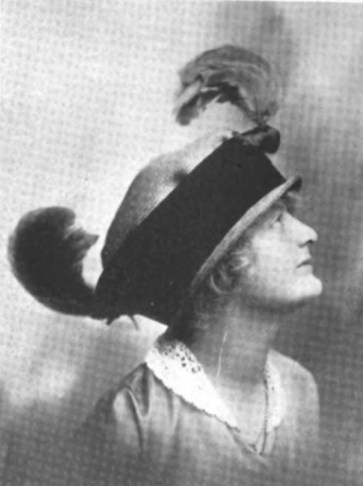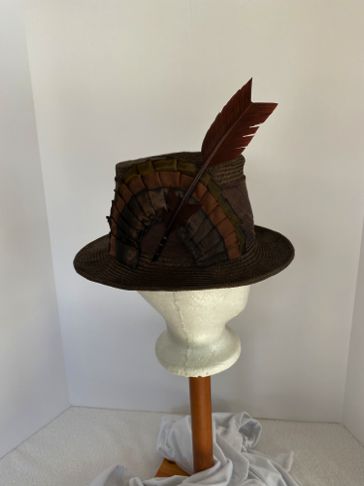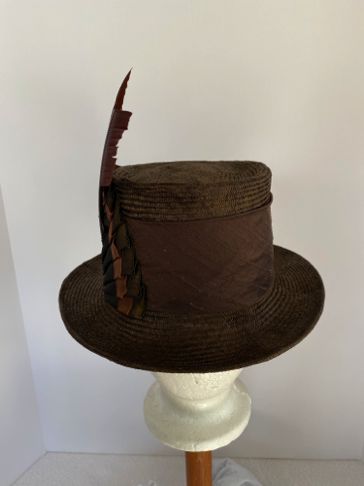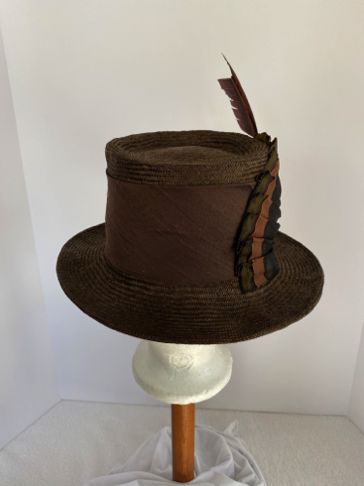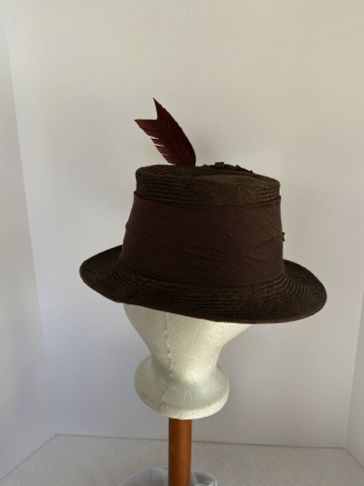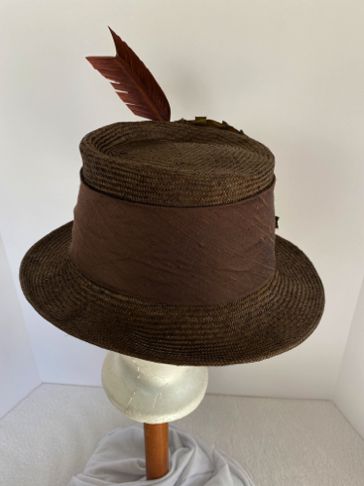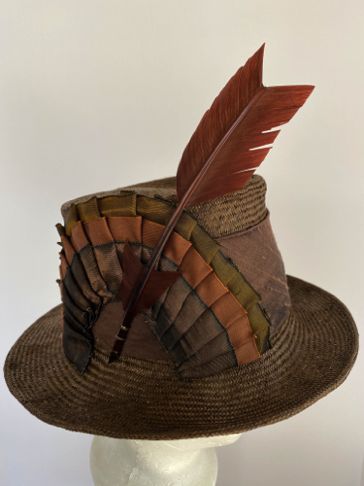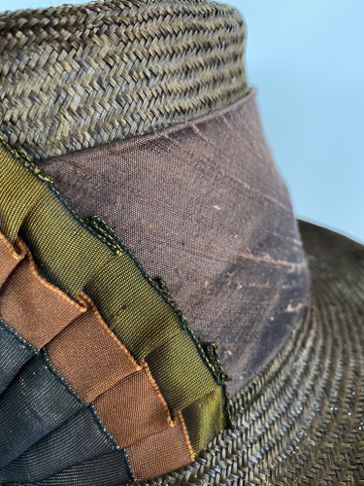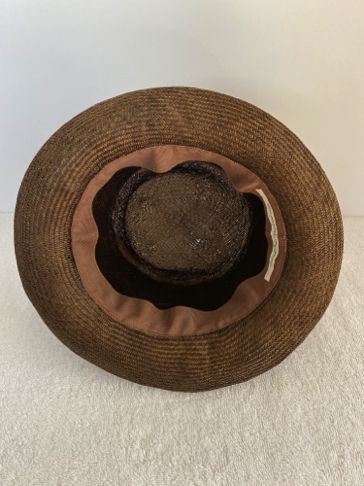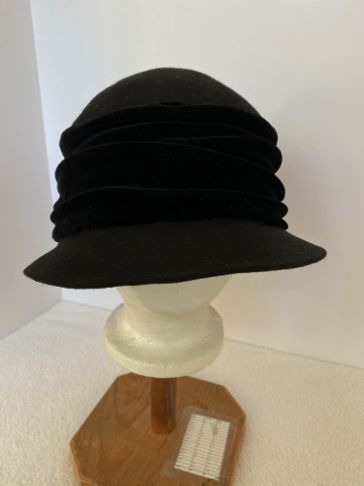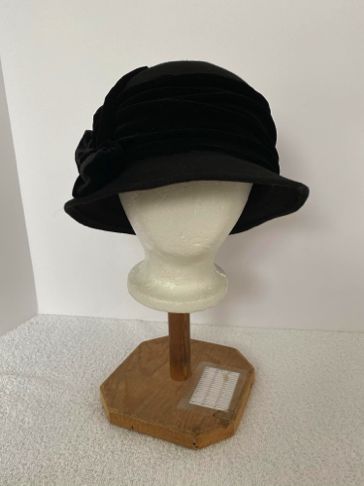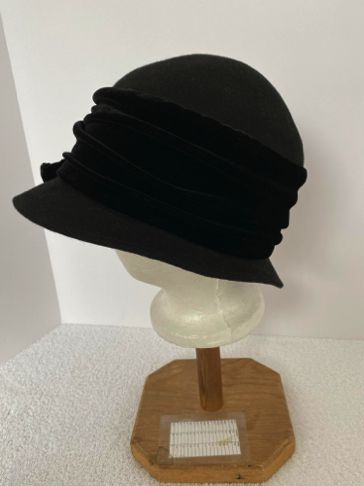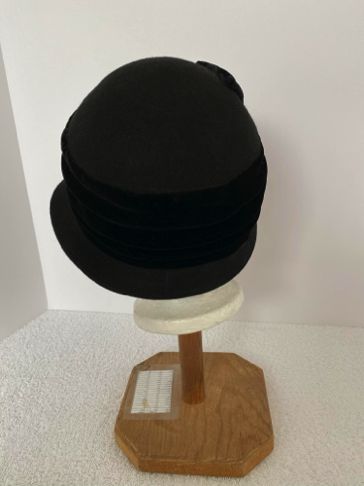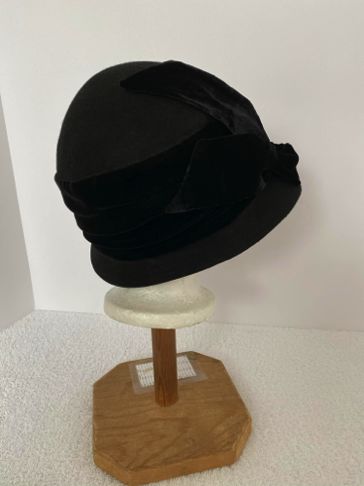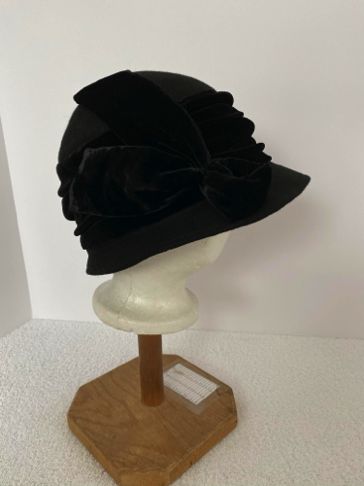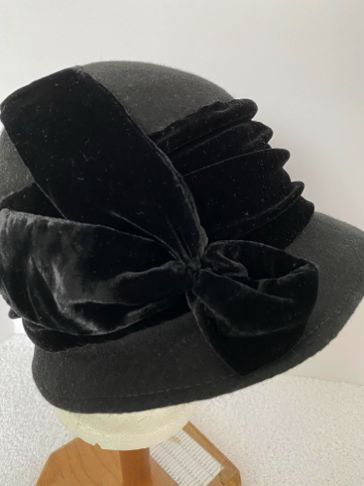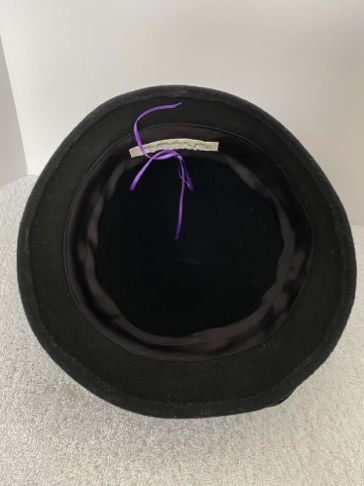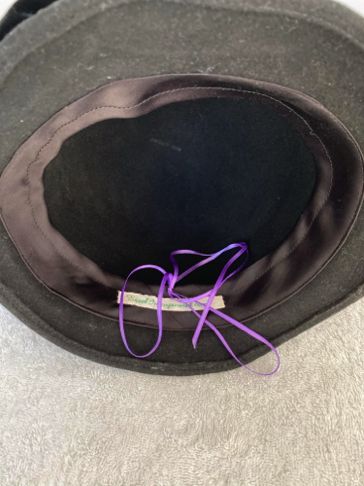Early 20th Century Ladies Hats
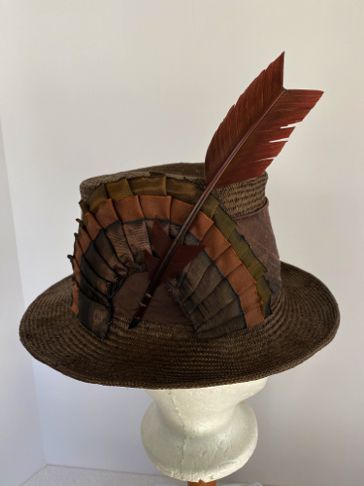
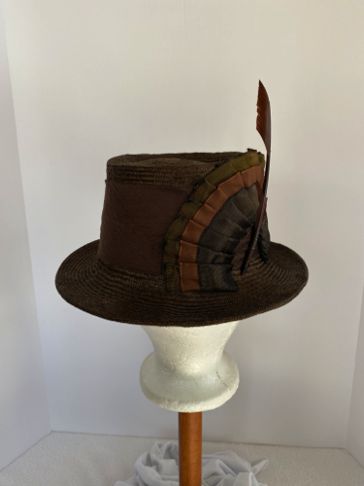
Hats styles in the beginning of the 1900's shared much in common with the ones from the late 1800's. Of course, just because the calendar changes that doesn't mean everyone runs out and gets a whole new wardrobe!
As skirts evolved to more of a bell shape and sleeves puffed up it became necessary for hats to get wider in order to balance the silhouette. Between 1904 and 1906 sleeves reached a pinnacle of width and that style came to be known as the "Leg-O-Mutton" sleeve. Skirts were slim on the hips and wide at the hem, with an s-shaped curve in the overall silhouette. This was a graceful time for hats with lots of swooping lines and even more trims. Large, exuberant "picture hats" could be covered in net, flowers, feathers and ribbons, all layered upon one another. Long hat pins were used to secure the large hat to a lady's hair, which was also styled in a wide, puffy topknot, giving balance to the head against the big sleeves and full skirts. To be fair, not everyone wore that style and there were also plenty of straw boaters, or sailor hats worn particularly for outdoor pursuits, by younger females, and by women who worked outside of their homes.
By 1908 fashions were changing again, and the roller-coaster of 20th century fashion really starting moving! Waistlines moved up, skirts narrowed (to become the ludicrous "Hobble skirt" worn between 1910 and 1914) and hats got bigger and bigger! It became necessry to have an inner crown or "bandeau" inside one's hat so that it would actually stay on the head as they were so oversized looking. Just as it seemed like fashions could not be more ridiculous WW1 began and clothing rapidly became more practical, if not entirely so. With so many men away at war it was up to women to keep things going and they couldn't do that in a hobble skirt.
For maybe the first time since Marie Antoinette it became acceptable, even reasonable, for women to wear skirts that showed their ankles (a trend that continued for another 50 years with skirts getting shorter and shorter until they got ridiculous again with the micro-mini skirt, but that's a tale for another web page). Clothing in general had sleeker lines and was not so fitted to the body. Corsets were more relaxed and hats too became less fussy and not so huge. This was a time when design lines rather than surface decoration became more prominent.
After the war and the subsequent pandemic, the second decade of the century saw the dawn of a new age - The Jazz Age! Although many were shell shocked and world economies were badly disrupted it was also a time of hope and freedom, especially for women, who began to "bob" their hair. The Cloche hat made it's first appearance and went on to become the signature style of the next decade.
